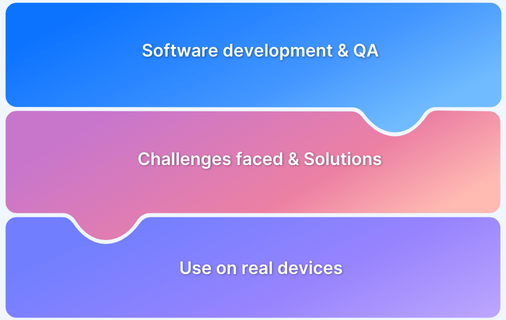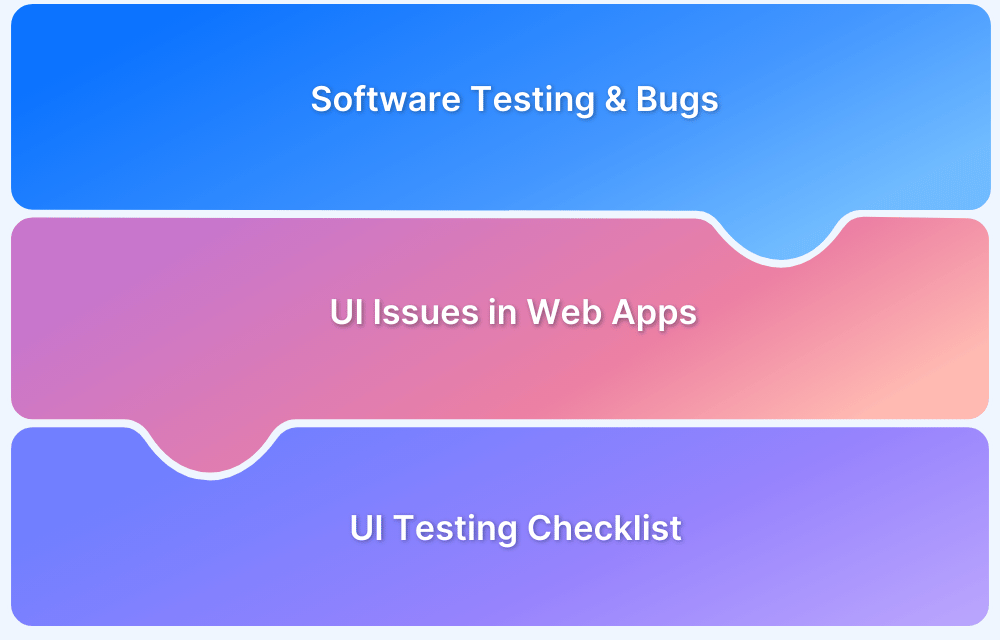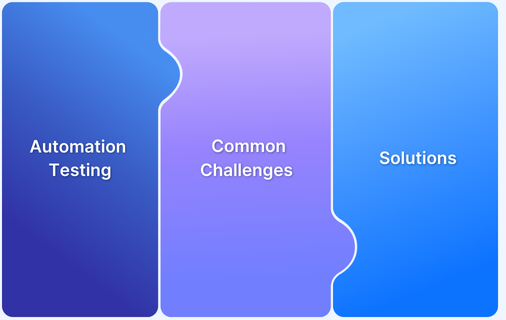Test Automation is fast and efficient. However, they do fail sometimes.
In order for automation to be successful on any long-term level, it needs to be approached with realistic goals, the right tools, and, most importantly, the right mindset. One of the easiest ways to achieve these is to do ample research about automation, why it works, and why it fails.
Overview
Reasons for Test Automation Failure
- Not Knowing What to Automate
- Lack of the Right Skills and Tools
- Low Visibility
- Difficult to Test Applications
- Lack of Specific Goals
- Unrealistic Expectations
- Ignoring Manual Testing Completely
- Not Giving Attention to Test Reports
- Web Elements With Undefined IDs
- Ignoring Parallel Execution
- Not Running Tests on Real Devices
This article discusses a few of the most common reasons why automation projects fail. Studying them will help testers, developers, and project stakeholders know what to avoid when executing automated test pipelines.
Reasons for Test Automation Failure
Understanding why test automation fails is crucial to identify gaps, improve efficiency, avoid repeated mistakes, and ensure better ROI from future automation efforts.
1. Not knowing what to automate
Take the example of a webpage. Which elements should be tested in automation? It would make no sense to automate tasks like checking rendering issues or locating important elements on the page. Automation requires a machine to recognize how a screen displays on different devices, browsers and screen sizes – which it cannot. Human eyes are required, as are tools like this responsive design checker which allows for quick displaying on a website across a range of desktop and mobile devices.
Similarly, if a tester starts using certain coordinates to verify the location of any element on a page, tests can be flaky when they run on a variety of devices and viewport resolutions. Again, it is better to use manual testing for this.
To ensure that automation works, it should be used to test elements that are stable, not prone to frequent change, and has to be tested repeatedly. For example, automation can be used to test a login form that simply needs a username and password. When one automates mundane, repetitive tasks, testers can devote their time to exploratory testing of more nuanced features and functionalities.
2. Lack of the right skills and tools
It is not possible to conduct successful automated testing without the right level of technical expertise. Finding and hiring people who know how to write the right test scripts and use the right tools can be difficult, time-consuming and expensive. Startups, in particular, will have trouble finding the funds required for this.
This also applies to finding and using the right tools.
Choosing an automation tool without evaluating compatibility, scalability, and ease of integration can lead to inefficiencies. The wrong tool may lack necessary features, require complex workarounds, or fail to support the application’s technology stack, resulting in wasted effort and poor ROI.
For example, BrowserStack Automate’s cloud Selenium grid, a robust cloud-based Selenium grid hosted entirely on the cloud, is utilized by multiple testers. Additionally, it is connected to over 3500+ real browsers and devices for automated Selenium testing.
Run Selenium Test on Real Devices for Free
To start with, it makes sense to hire a few testers with the requisite skills and let them train existing testers. Similarly, pick tools required for immediate automation and then gradually expand the pipeline with time.
3. Low visibility
Quite often, at the beginning of automation in an organization, it is usually a few individuals who are executing automatic testing while the rest of the workforce remains largely unaware of its workings. This lack of visibility almost always leads to automation failure, since automation strategies are not taken seriously unless people are aware of how they work and make testing easier.
If the right people in a company are not informed about automation efforts, then testers miss out on the chance to collaborate with the right people. It is unreasonable to expect that two to five individuals can accomplish automated testing completely on their own, especially as code volume increases from the developers’ side.
Here are a few ways to gain greater visibility:
- Ensure easy availability of information about what features are being tested with automation and how the automation framework has been configured.
- Ensure that the results of automation projects are visible to the whole team.
4. Difficult to test applications
An application needs to be easily testable on multiple levels – unit, system, integration, and acceptance. If the application is not coded in such a way, it becomes a hassle to test – requiring more complicated scripts and more tools. This leads to more expenses and longer timelines.
Testability should be a major concern for developers from the very beginning of their coding efforts. That means it needs to be discussed during backlog grooming, spring planning meetings – all before dev work starts on a feature. A good way to ensure this is to involve QAs and testers in the discussions from the start.
5. Lack of specific goals
Most automation projects fail because they start too big. One cannot simply jump into the midst of automating entire test suites without building a robust framework that has the right integrations with CI/CD tools, is easy to maintain, stable and linked to a quick and effective feedback mechanism.
Start small. Identify a few high-level functions that are stable and more easily testable. Automate their testing, and collect feedback that will show what works and what doesn’t. Once these tests run consistently without bugs, use the feedback to incrementally build an automation pipeline with the necessary tools and the right people in place.
Don’t start with a complex goal that encompasses testing a whole application with automation from the get-go. Often, this will lead to massive errors that, in turn, will need the whole framework to be reconfigured. This translates to loss of time, effort and money.
6. Unrealistic Expectations
Many teams assume that test automation can completely replace manual testing or achieve 100% test coverage. In reality, automation is best suited for repetitive, stable scenarios, and unrealistic expectations can lead to disappointment and ineffective test strategies.
7. Ignoring Manual Testing Completely
While automation accelerates regression testing, it cannot replace human intuition, exploratory testing, or usability validation. Ignoring manual testing entirely can result in undetected UI/UX issues, unexpected edge cases, and poor test coverage.
8. Not Paying Attention to Test Reports
Test reports provide valuable insights into failures, execution trends, and system health. If teams neglect analyzing test reports, they miss opportunities to detect recurring failures, optimize test coverage, and improve software quality.
9. Web Elements with Undefined IDs
Unstable or dynamically generated web elements make automation scripts unreliable. If elements lack unique identifiers, tests frequently break due to changes in the DOM structure, leading to maintenance overhead and flaky tests.
10. No Parallel Execution
Running tests sequentially slows down execution time, especially for large test suites. Without leveraging parallel execution, automation efforts fail to provide timely feedback, delaying development cycles and reducing overall efficiency.
Cloud-based solutions like BrowserStack Automate enable parallel testing across multiple browsers and devices, significantly reducing test execution time and accelerating release cycles.
11. Not Running Tests on Real Devices
Testing exclusively on emulators or simulators can lead to false positives or missed issues, as these environments do not fully replicate real-world performance, network conditions, or hardware differences. Real devices provide more accurate insights into app behavior, ensuring that automation tests catch critical bugs before release.
Platforms like BrowserStack Automate allow teams to run tests on 3500+ real device-browser-OS combinations, eliminating these risks and ensuring seamless user experiences.
Conclusion
To conclude, automated testing processes need to be clearly defined and optimized from the start. The ambiguity of who does what or what tools to use will only serve to convolute and delay the development lifecycle. Avoid the issues outlined above, and stand a much better chance of making automated testing work in your favor.
To further streamline automation efforts, use testing tools like BrowserStack Automate. It provides a robust cloud-based platform for running automated tests across real browsers and devices. With features like parallel execution, seamless integrations with CI/CD pipelines, and reliable infrastructure, it ensures faster test execution, broader coverage, and a smoother development workflow.







